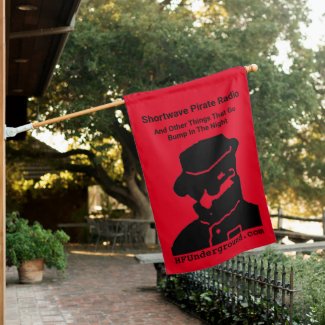A 12.888 dual antenna test- Overview 
Curiosity spawned this project which uses two antennas; one vertical and the other an inverted V dipole. The test beacon frequency will be 12.888 (+/-) with a switching arrangement for feeding two different antennas. The antenna being used at any given part of the transmission cycle will be designated by its identifier. When running on the vertical it will send 5 Vís and when switched to the inverted V dipole it will send 5 Dís. Five Vís and five Dís represent a repeating cycle. The listener will observe a small delay between V and D cycles and again between the D and V sequences. The dash in both the V and D characters has been lengthened a bit with the hope of the operator being able to better read his S-meter or otherwise noting a relative signal report.
The vertical is the identical antenna used previously during the previous 12.888 dasher test run. It remains a quarter wave long and about eight feet off the ground with two quarter wave sloping radials, whereas the inverted v dipole is a one half wave typical design configured with the angle between radiators at about 120 degrees and broadside to 330 degrees from central Florida and at an elevation of about 25 feet. I chose this height with the thought that 25 feet may be typical of a horizontal radiator deployment in a PHFER site. Both antennas utilize choke baluns, and I have been as careful as possible to minimize any imbalance in the fed RF power to the two antennas. I would hazard a guess as to the differential power input error being around 1 db, with the dipole winning out with a bit more rf. Of course I expect the dipole to be more efficient when compared to the vertical quarter wave radiator configured over lossy sand, however Iím still curious on comparative signal reports. Radiation angle may or may not be the dominant factor and signal strength depends on distance and propagation layer heights etc. Brief receiving comparisons between the two radiators have shown momentary 2-3 s unit differences in received signals. The current sunspot cycle with all its fits and very few starts presents a unique time for experimentation. It is with the hope sufficient propagation exists to hear signals from both antennas permitting the sought after signal comparison.
Both the transmitter and control switching circuitry is finished and bench tested.
The transmitter provides 500mw output at 13.6 volts and the final runs real cool, as my primitive rf measurements indicate 70% efficiency. Itís a simple two transistor design optimized for this frequency. The power supply is regulated to 0.25%, and the Idíer and control circuitry is based on an old Parallax Basic Stamp microcontroller that had been laying around unused for years.
Suggestions are welcomed for a future test. Ever wonder how a half wave vertical dipole fares against a ground mounted quarter wave vertical? How about a two vertical system using the gain produced with -90 degree phasing? My lot is not very big but to a degree I can borrow a little real estate from an empty lot next door. I would appreciate relative signal strength comments where possible even while realizing that fading can make such comparisons difficult. Yet one antenna may dominate from a given receiving location so appropriate comments are welcome. Letís see what reports are received!
Before RF is applied there remain several additional tasks which need to be accomplished this week (11-2 to 11-6).
Official commencement notification will made by announcement on this site.
Standby!

weaksigs



